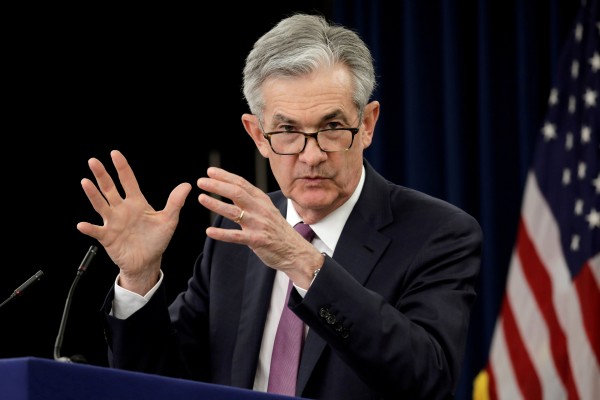

The Federal Open Market Committee (FOMC) meeting on 17-18 September brought only a cut of 25 basis points – President Trump had hoped for a far deeper cut – alongside a similar statement and set of forecasts to those that had followed prior announcements, giving little away about the threshold for further rate reductions.
The FOMC’s dot plot – which sets out members’ expectations of future interest rates – revealed seven doves on the committee who expect one further cut this year, five looking for no further adjustments, and five seeming to object to the cut that was just delivered.
The median dot now signals no cuts in 2020, albeit with a heavy bias towards one cut, and one hike for 2021.
For the longer term, the median dot indicates a 2.5 per cent rate, which implies one more hike beyond 2021 to get back to a neutral position.
Matters of statement
The FOMC statement, meanwhile, was very similar to the one released in July, which was upbeat on the domestic economy.
This gave us no firm steer on the future direction of monetary policy, although we did see that Esther George and Eric Rosengren both voted against the September cut – they had both dissented against the July cut too – while James Bullard favoured a cut of 50 basis points.
In the press conference, Chair Powell’s comments were carefully scripted and he offered primarily a series of prepared answers.
These made many references to the trade war as the cause of uncertainty and weaker capital expenditure, but he did also blame weaker global growth for poor export and manufacturing numbers.
While he sounded confident in his outlook, Mr Powell was nevertheless quick to point out that "if the economy does turn down, then a more extensive sequence of rate cuts could be appropriate".
Powell nevertheless insisted that he did not expect such a downturn and series of cuts, and in the economics team at Legal & General Investment Management we are slightly more hawkish than the consensus view.
While another cut is priced in by the market for 2020, we have the Fed on pause next year.
Much hinges on how the trade war develops, however.
Even if there is a ceasefire in the trade war – our baseline assumption in the economics team – the earlier tariffs are still likely to lead to some further deterioration in the economic activity data, justifying one more rate cut this year.
This is in line with market forecasts.
A full-scale escalation, on the other hand, will likely deliver a significant growth shock and warrant aggressive monetary policy easing. Some type of trade deal would conversely make it easier for the Fed to pause.
NIRPing a downturn in the bud
One other comment from Mr Powell caught my attention.
In the event of a significant economic deterioration, which he stressed he was not expecting, he expressed a preference for ‘large-scale asset purchases and forward guidance’ rather than negative interest rates.
But he added: "I just don’t think those [negative rates] will be at the top of our list."
That does not explicitly rule them out.
I too have wondered whether negative interest-rate policy (NIRP), as we have already seen in Europe, might play a role in the next prolonged easing cycle in the US.
One economist at the Fed, Vasco Curdia, has already broached the subject.
He wrote a paper in February arguing that negative interest rates would have delivered a faster recovery from the financial crisis and restored inflation to the target level much sooner, basing his model simulations on an effective zero lower bound of -0.75 per cent.
The same author also advocated inflation overshooting in 2016, using very similar language to that subsequently adopted by his then-boss John Williams in a December 2018 speech.
So it seems highly likely that if the circumstances arose, at least Mr Williams – now a voting FOMC member as the Fed’s vice chairman – would be open to the idea of negative interest rates.
There are several reasons why the Fed may be more comfortable with negative interest rates now than it was during the last crisis, including a lack of serious adverse effects on financial stability in the euro area and the apparent effectiveness of negative rates in pushing down a broad range of longer-term interest rates as banks and investors attempt to avoid the negative returns on the shortest-term assets.
So, with President Trump using Twitter to call for more accommodative monetary policy in ever-greater numbers of capital letters, it is very much conceivable that in the next downturn the Fed might opt for modestly negative interest rates.
Tim Drayson is head of economics at Legal & General Investment Management



